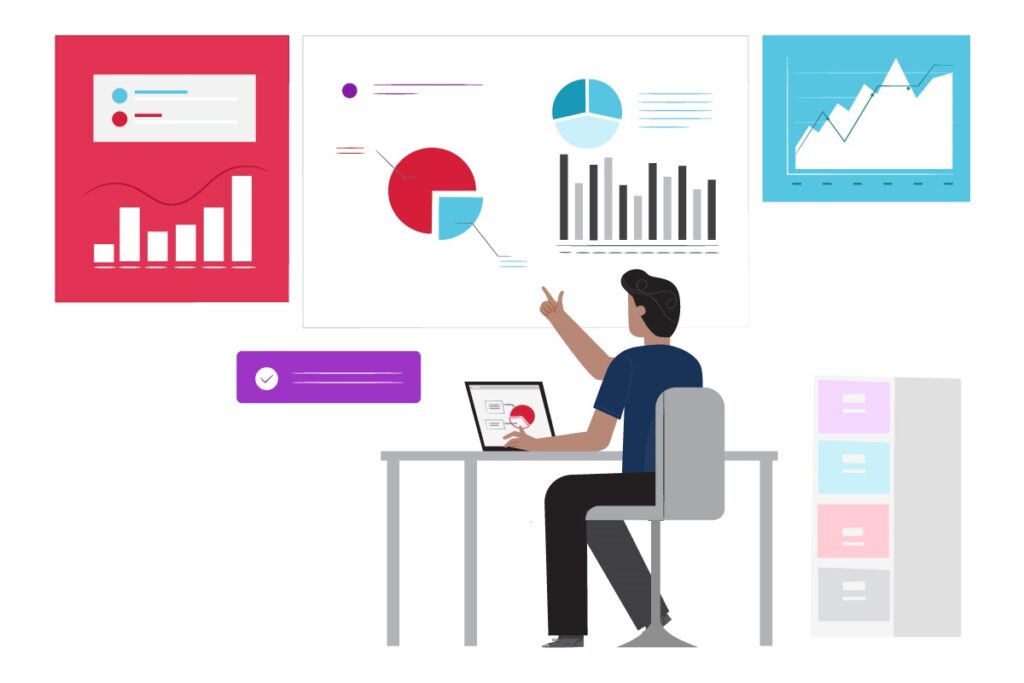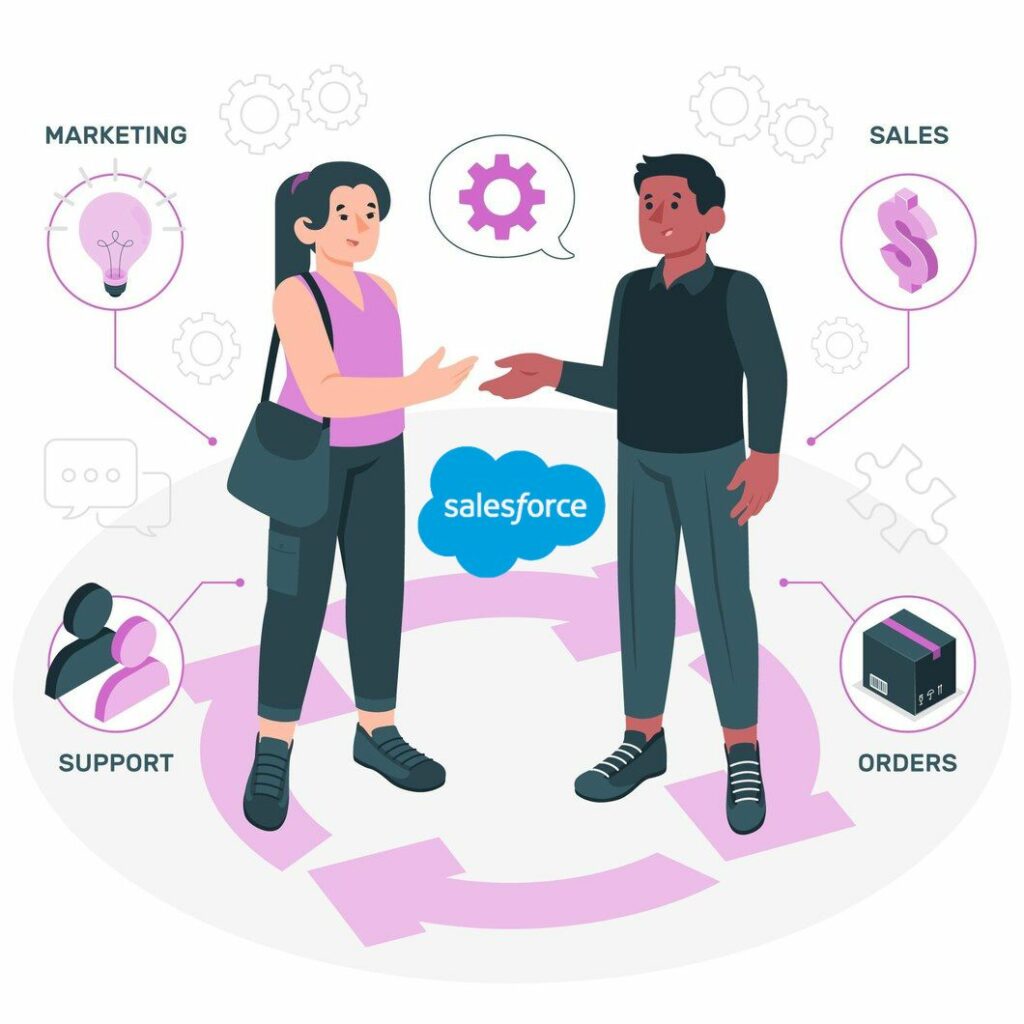Unlocking the Efficiency: Transition from legacy ERP to NetSuite ERP
Unlocking the Efficiency: Transition from legacy ERP to NetSuite ERP
New technological innovations are good for business growth. Companies implement new technology solutions to automate their processes, streamlining them and increasing productivity. But you are in for losses if you do not keep updating these solutions with scaling businesses and evolving technologies.
ERP systems have seen a great deal of evolution. There are new features or functionalities every couple of months. Cloud is the new residence of ERP capabilities. We even see the addition of data analytics, data mining, and machine learning attributes to ERP.
When ERP is progressing, how can you stay behind? You must realize that relying on old, legacy ERP systems can cost you money. And you cannot stay relevant to the hyperactive world with a legacy ERP system. You must jump to a cloud-based ERP solution to handle the demand of this expanding business world.
Let’s see how legacy ERP systems are not an asset but a liability to your business.
Problems of Legacy ERP Systems
ERP systems automate processes, give complete visibility, and increase your productivity. They create better experiences for customers through quality and on-time output. Employees also enjoy using ERP because it replaces manual, repetitive work. Thus, consumers and employees are happy with companies’ use of ERP systems.
But when these ERP systems become outdated, they lose their shine. They are unable to automate some workflows. They cannot perform some advanced tasks. You need more integrations and configurations to accommodate changes. Or you are unable to generate the analytics and insights needed for decision-making.
It means you need to replace your legacy ERP systems. The primary symptoms of your legacy ERP systems that call for your attention are:
Use of different systems for different business functions
You have an ERP system in place in your company. But you also have another financial management, analytics, or inventory management system. Then understand that this legacy ERP system needs a replacement.
Using several systems for different essential functions leads to time and money wastage. Also, in such cases, you have different data in different systems. To use one function’s data in another, you need to import it and then work on it. All this leads to data inconsistencies, inaccuracies, and changes in formats.
It is a duplication of work for employees, which means unnecessary time consumption in redundant work. It results in productivity loss for the company, which could have been used for more strategic work.
Another problem with data in different systems is the risk to data security. People with malicious intent might get access to your sensitive data. Or there might be security breaches. The result is damage to your business.
This is a sign for you to replace your legacy ERP system with a new ERP solution.
Data in silos; no unified data storage
In the current times, ERP systems allow smooth and easy data integration. You do not need extra tools or applications to integrate data from different functions. But that was not the case in legacy ERP systems.
So, if you find integrating data from different applications challenging, it is time to say goodbye to your legacy ERP system. Legacy solutions do not have integrated features. Also, you need to download data from one application and import it into another to analyze and generate insights. The symptoms include:
- Too many processes of data export and import in different systems
- Data storage of different functions in different systems
- Impossible to see the data of inventory, marketing, sales, supply chain, etc., in one view
- The data update does not happen in real-time
- Absence of data visualization and dashboards
- Manual intervention at the time of updating or changing data
When you see these symptoms, get a new ERP solution with integrated functions. You will have a single database for all your company data to access and work on. A unified data source helps to manage your operations according to modern demands.
No connection of business with customers, suppliers, and employees
Do your suppliers wait for your phone call to repeat the orders? Are your customers waiting for your call or email to get an update on their deliveries? Do your employees wait with a file outside your door to get approval before proceeding? If it is a yes to any of these, your ERP system is useless.
Your suppliers must be able to check your orders on the ERP system. You must have the flexibility to get rates from various vendors and send an order with just one click. You and your suppliers must get real-time updates on the status of delivery. You must be able to make payments to suppliers on time. Change it if all this is not happening through your old ERP system.
Customers are unable to see the inventory on hand or prices. They cannot access the status of their request for a return or complaint. They have to wait for your email to give you feedback. This means you are using an outdated ERP system that does not ease customer engagement.
Your sales team needs to use spreadsheets to write their sales numbers to calculate commissions. Your finance team needs to make a separate invoice always to process it. Your inventory manager needs to get manual approval on the order before processing it. All these signs are alarming.
The business is disjointed from its customers, suppliers, and employees in all these cases. But a cloud ERP system connects you well, helping to communicate. It keeps you connected to them with real-time data and information exchange. It allows all stakeholders to engage, update, and work in tandem.
Requires too much time and money investment
It is past its date if you are spending too much money on customizing the ERP system to your business needs. Even too much time spent in data configuration shows it’s time to change the ERP system. The issue is when these customizations and configurations do not lead to the desired process change. They do not result in the expected outcomes. Also, they cost you much money, eat your critical time, and disturb the operational flow.
Sometimes the vendors also stop supporting the ERP software. You might need to frequently change the hardware or operating system that supports the software. Also, you need to spend a bomb on its operations and maintenance. If you find that the cost of implementing a new ERP system is less than the total cost of ownership of the legacy ERP system, you know you need to get the new one.
Employees’ dissatisfaction with the ERP system
There are chances that when you bought the ERP system, the employees were happy with it. It automated the processes and delivered results faster. Employees had more time to focus on strategic things instead of manual, routine work.
But there are chances that now there are new routine tasks not yet automated by the ERP. Employees are still finding it a hassle to finish some activities or workflows. Employees find it frustrating to open different applications and tools to complete one task.
It also becomes challenging for employees to collaborate with other teams. It gets more complicated to manage work and employees. This happens because there is a lack of an integrated ERP solution. If your employees are dissatisfied or disgruntled with legacy ERP systems, it’s time to take action.

The legacy ERP system is not competent enough and not scalable
When you bought your first ERP system, it was sufficient to address your needs. It was enough to handle your few transactions and a few numbers of users. But, over time, business grows, and business functions expand.
Your processes and workflows change. You have more data to store, more analysis, and more functionalities to perform. And your legacy ERP system is incapable of addressing your evolving needs. It is unable to accept extra responsibilities and is inflexible. You are unable to manage collaboration between different teams.
This is a red flag that your legacy ERP system is past its time. It does not support the growth that your business is going through. It cannot adapt to the new changes in products, services, business models, processes, and customer demands. It limits your ability to compete with others in the market and grow. There are no facilities for data analysis, visualization, and reporting. Thus, you must replace your legacy ERP system with a new, feature-rich, scalable solution.
Unable to support mobile employees and decentralized business
Businesses are moving to different locations. Employees have shifted base from office to remote locations. And still, businesses stay connected, and employees collaborate. All this is not possible with old and outdated ERP systems.
Legacy ERP systems are set up at one location. Employees need to log in to the office systems to access data. They need to coordinate in offices for different processes. It requires a centralized structure where the work starts and stops.
But the current business environment requires you to be on a constant move. Work takes place in different geographies at different timelines. Companies outsource work to third parties and use remote workers and freelancers. All this demands more collaboration. And this is possible with a cloud-based ERP system, making business more agile, fluid, and efficient.
Legal or regulatory changes in your operational scenario
The old ERP systems managed accounting as per the ‘then present’ accounting laws. The tax calculations considered the applicable deductions and inclusions. The same applies to any other regulations and laws affecting your business operations.
But over a while, these laws change. Some Middle Eastern countries introduced VAT and Corporate Tax. Or there is a change in the accounting methods. Such changes affect your workflows and calculations in the ERP system. And your legacy ERP system may be unable to adjust to the new settings. In such cases, you must consider replacing your legacy ERP system with the new one.
Expanding into other countries will mean including new languages and currencies in your processes. And if your legacy ERP system cannot handle it, you will face issues managing your global operations. Similar is when you add eCommerce to your operations or add a new, unrelated service.
IT troubles are a daily affair
Daily IT troubles create general frustration among employees. When you are about to start work in the office, and the system doesn’t work, it irritates the most. Or, you are about to shift to the new process, and your technology doesn’t respond. It annoys employees, and they lose their motivation to work that day. If these IT troubles become frequent, you must understand that your legacy ERP system needs an upgrade.
There are possibilities that the hardware is outdated and unable to support the software. Or the software cannot handle the demands of modern business needs. Or the software and hardware are incompatible. It is high time that you start using a modern ERP system.
IT troubles also exist because new employees cannot understand the working of old systems. New employees are the millennials with habits of running fast, easy-to-learn, and flexible systems. If your legacy ERP system is not user-friendly, users find it problematic.
Instead of spending on innovation, you spend on maintenance. Your patching, fixing, infrastructure management, and support expenses are eating up your IT budget. With old ERP systems, this happens. So, shift to a new ERP software so that you can focus on innovation and advancement.
The right time to buy a new ERP system
Consider upgrading or changing your legacy ERP system if you see any of the abovementioned symptoms. All these demerits of legacy ERP systems must not hold you back from competing in your industry.
Legacy ERP systems reduce your ability to adapt and respond to changes or evolution. Also, you must have added more applications to your legacy ERP solution later. But the addition is still unable to solve the issues because of integration incompatibilities. If you see these signs, you must know it is time to make the big switch.
Yes, making the switch is a risky affair. You might be afraid of the changes in processes due to the new ERP. Or, you might have concerns about employees’ reactions to the significant shift or rejection of the idea. The monetary investment creates anxiety as well. But you must understand the benefits of the new ERP solution to your business.
Investing in a new ERP system can lead to innovation, new ideas, and increased productivity. And you need this to align your business offerings with customer expectations. You must prepare your processes better with cloud ERP solutions to gain a competitive edge over your peers. This ERP solution must be end-to-end, integrated with applications, and scalable to grow as your business grows.
NetSuite ERP – An apt replacement for your legacy ERP system
You can replace your legacy ERP system with a unified feature-rich system. And one such end-to-end cloud-based solution is NetSuite ERP. It is a next-generation solution with several modules to streamline all your business operations.
With NetSuite ERP, you can achieve the following:
- You adapt to new industry trends and meet customers’ evolving demands.
- You access a lot of data and information from all your business functions to analyze them.
- You share data and collaborate with other departments and teams to better understand the business situation.
- You analyze data and generate insights through charts, visualizations, and dashboards.
- You can ensure the security and confidentiality of your data.
- You are flexible to changes and quickly accommodate new users, functionalities, and processes as your operations expand.
- You are innovative and creative and have better control over your operations.
- You can access real-time customer data to create exceptional and rich experiences.
- You respond to the industry’s changing paradigms and rapidly grab growth opportunities.
- You stay compliant with the changing accounting, tax, and legal regulations.
- You spend less on customization and maintenance, increasing the return on your investment.
- You have excellent visibility of all your business operations, helping to make strategic decisions.
- You access your ERP system from anywhere and at any time.
Role of Cloudiotech in NetSuite ERP
Cloudiotech is a leading NetSuite consultant in the UAE and the US. We have been helping clients with expert NetSuite services. Our service offerings include:
- Implementation
- Integration
- Data migration
- Configuration & Customisation
- Post-implementation support
- Training
We make your transition from a legacy ERP system to NetSuite seamless and fast. Based on your business needs, we properly plan NetSuite ERP implementation. Also, your employees get appropriate training to make maximum use of the solution.
Don’t be left behind, adopt the NetSuite ERP solution to achieve a competitive edge.
Contact Cloudiotech for the best consulting services on NetSuite solutions.




